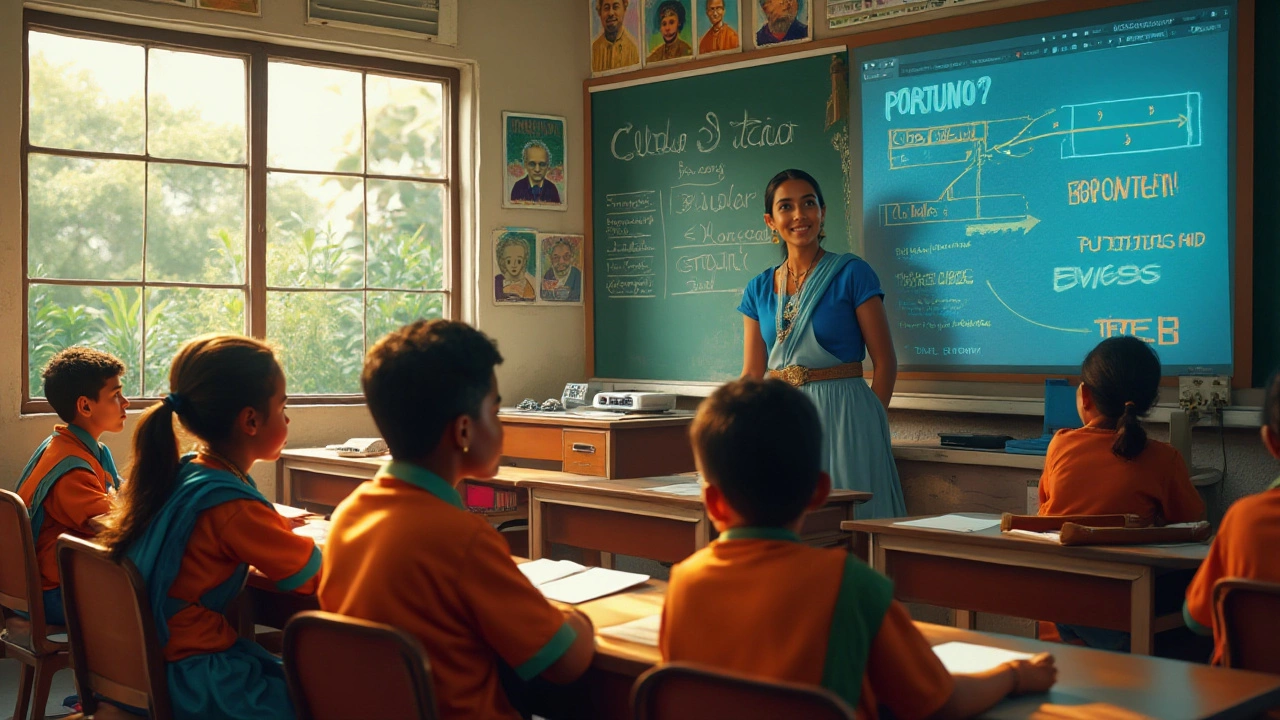Diving into the world of coding can feel like exploring a new universe. With so many languages out there, choosing the right one to start with is a crucial decision. Each programming language comes with its own set of features, use cases, and learning curves.
In this article, we'll navigate through some of the best programming choices for beginners in 2025, helping you discover which path aligns best with your goals. We’ll introduce Python, often hailed for its simplicity, JavaScript, known for its power on the web, and even Scratch, a visual programming language that makes coding approachable for younger enthusiasts.
Understanding your personal goals and the specific areas of coding that excite you can transform this learning process from overwhelming to incredibly rewarding. Let's embark on this journey together and unlock the possibilities that coding offers.
- Why Start with Python?
- JavaScript and Its Versatility
- Exploring the World of Scratch
- Choosing Based on Your Goals
Why Start with Python?
When it comes to initiating your journey into the coding world, Python often takes the spotlight as a favorite among beginners. It’s not just hype; there's a solid reason why beginner programming enthusiasts are steered towards this language time and time again. Python stands out because of its simplicity and readability, making it an ideal choice for those who are just starting out. Unlike other programming languages, Python’s syntax is intuitive and mirrors the English language, thus lowering the barrier to entry. This ease of understanding allows newcomers to focus on learning programming concepts rather than getting bogged down in language complexities.
Python's versatility is another compelling reason to consider it as your first coding language. Whether you're interested in web development, data science, automation, or game development, Python offers libraries and frameworks to support work in these fields. For web development, frameworks like Django and Flask provide strong support. If data science is your calling, powerful libraries such as Pandas and Matplotlib are available, offering extensive functionalities for handling data. This adaptability not only gives learners a broad spectrum to experiment with but also enhances job prospects as Python professionals are highly sought after.
Equally significant is the robust coding classes community that Python boasts. As you embark on this learning adventure, having access to a community can be a tremendous asset. Python has one of the largest and most supportive communities, with countless forums, tutorials, and resources available to help guide learners at every stage. Whether facing a coding error or trying to comprehend new concepts, a simple online search will often yield countless solutions or even direct support from community members. This shared wealth of knowledge serves as both a safety net and an enrichment tool for anyone starting out.
Moreover, Python's presence across various industries cannot be understated. Whether in education, tech giants, or startups, Python is utilized globally. Its applications range from supporting educational platforms like MOOCs with interactive coding exercises to extending into realms of artificial intelligence and machine learning. A quote from Tim Peters, one of Python's rather influential figures, encapsulates its essence:
The greatest thing about programming Python is that everything is logical, making error detection and correction intuitive and fast.This drives home the point that, with Python, learning becomes more about the creative process of solving problems and less about parsing language rules.
In the grand scheme of learning programming, Python serves as a stepping stone, setting a solid foundation not just in terms of language skills, but also developing computational thinking. Its widespread use makes switching to other programming languages smoother as foundational programming concepts will have already been mastered. For anyone standing at the entrance of the software development world, contemplating which path to take, Python presents a compelling, well-rounded, beginner-friendly option that’s hard to ignore.

JavaScript and Its Versatility
When diving into the vast ocean of programming languages available today, JavaScript emerges as a standout, offering not just a single highway but a whole network of possibilities. It's a language that has grown beyond its original confines as a tool for creating simple scripts on web pages, now powering entire ecosystems across different tech landscapes. What makes JavaScript so appealing is its versatility; it runs on both the client and server sides, thanks to environments like Node.js, making it an essential tool for full-stack developers.
JavaScript's syntax is relatively easy for beginners to grasp, resembling the structure of languages many learners might already be familiar with, such as Java or C. It's primarily used to make interactive and dynamic web applications, helping to breathe life into otherwise static HTML and CSS. With JavaScript, you can manipulate content on a webpage in real-time, responding to user inputs without refreshing the page. This ability is crucial for creating modern web experiences that are fast, responsive, and engaging. One could say JavaScript is like the paintbrush in the web developer's toolkit, able to transform a canvas into a vibrant painting full of interactivity and animation.
As technology has evolved, so has the ecosystem surrounding JavaScript. The development community has witnessed the rise of numerous frameworks and libraries, like React, Angular, and Vue.js, each offering unique flavors of functionality and enhancing JavaScript's capabilities. React, for instance, helps developers create complex user interfaces more efficiently by allowing components to maintain their own state. And let's not forget the explosion of growth in server-side JavaScript with Node.js, which has opened new horizons for creating robust, scalable backend services.
JavaScript is not only about technical depth; it's also about sheer ubiquity and support. It's the backbone of web development, making it an incredibly relevant language for anyone pursuing careers in developing websites or involved in the expansive world of the Internet of Things (IoT). The developer community around JavaScript is massive, offering an endless pool of resources, tutorials, and forums where help is just a query away. According to GitHub's 2024 Octoverse report, JavaScript once again topped the list as the most popular language used worldwide.
"JavaScript has become the Swiss Army knife for modern developers," says Tim Berners-Lee, the father of the web. "Its reach and impact are unparalleled in the digital era, enabling creativity and functionality that fuels the internet today and tomorrow."
However, learning JavaScript is not without its quirks. One must navigate its dynamically typed nature, where variables can change types seamlessly, which might confuse beginners. Yet this flexibility often turns into a forte, demanding a deeper comprehension and appreciation of programming concepts. Thus, choosing JavaScript as a starting point in coding offers a balanced mix of challenge and reward. The language's widespread use in coding classes attests to its well-rounded nature as an introductory language.

Exploring the World of Scratch
Scratch is truly a gem when it comes to introducing beginners, especially children, to the art of coding. Developed by the MIT Media Lab, it was designed with a mission to make programming accessible to everyone in a playful and creative way. What's remarkable about Scratch is its graphical interface, contrasting sharply with text-based coding, which tends to intimidate beginner programmers at first glance. Here, coding is more visual and interactive—users can drag and drop blocks of code to create animations, games, and other interactive programs. This fun method not only captivates younger audiences but fosters a deep understanding of programming logic and problem-solving.
Steve Jobs famously said, "Everybody should learn how to program a computer, because it teaches you how to think." Scratch encapsulates this philosophy by encouraging critical thinking from the onset.
The visual nature of Scratch makes it uniquely powerful. Imagine constructing a storyline for a game where you didn't have to type a single line of syntax. Instead, you'd simply piece together colorful blocks that make characters come to life on screen. This hands-on way of learning reduces the pressure often associated with memorizing code, shifting the focus to creativity instead. As beginners design their own stories and interactions, they unknowingly gain a foundation in core principles such as event handling, loops, and conditionals—essential elements shared across many languages in the coder's toolkit.
Benefits Beyond Coding
Scratch doesn't just stop at coding concepts. It opens up a world of collaboration and community, which is quite the teaching tool in itself. Online, Scratch boasts a global community where users share projects, offer feedback, and inspire one another. This lets newcomers see coding as a social and communal activity, breaking the stereotype of coding as a solitary endeavor. Engagement like this often leads to more sustained interest in pursuing coding classes and can inspire users to transition into more advanced languages as their confidence grows.
Another aspect worth mentioning is Scratch's adaptability in educational settings. Teachers worldwide have embraced Scratch in the classroom, finding it a valuable educational asset for various subjects beyond computer science. Whether it's a project demonstrating historical events or a simple physics engine illustrating gravity's effects, Scratch serves multiple educational objectives while nurturing an interest in coding. This multifaceted approach ensures that students see the relevance of coding in all fields of study, broadening their horizons and piquing curiosity in unexpected ways.
For those interested in learn coding through Scratch, getting started is simple and doesn't require prior experience or technical expertise. The language is continuously evolving, integrating new features as digital education trends progress, keeping the platform dynamic and aligned with the latest educational needs. As the digital world encapsulates more areas of our lives, Scratch remains an inviting doorway into the broader landscape of programming, helping to cultivate a new generation of analytically minded problem solvers ready for the challenges of the future.

Choosing Based on Your Goals
Understanding what you aim to achieve in your coding journey is a vital first step. If your dream is to build responsive and interactive websites, then venturing into JavaScript is your go-to option. It's a mainstay in web development and works seamlessly with HTML and CSS. On the other hand, if you're curious about artificial intelligence or data science, Python might be your best friend. Known for its readability and extensive libraries, it's like the magic wand you need to dive into these advanced fields. Making your choice based on interests not only enhances your learning experience but also maintains your enthusiasm and drive.
For those eager to create games or animated stories, starting with visual programming platforms like Scratch provides a unique foundation. Its drag-and-drop interface introduces fundamental concepts without overwhelming you with complex syntax. This approach makes it perfect for younger learners or those who simply want to experience coding in a playful environment. As your skills develop, transitioning to more advanced languages becomes a lot smoother.
Another factor to consider is the current market demand. A look into recent tech reports shows a consistent need for Python and JavaScript experts. According to a survey by a leading coding bootcamp, over 70% of tech companies favored candidates with proficiency in these languages.
"The ability to program is becoming a basic litmus test for the modern employee," remarked one industry insider. This sentiment is echoed across businesses, emphasizing the importance of aligning your learning path with market trends.Today's job postings often list these languages as desirable skills, making them a safe bet if employability is high on your list of goals.
Finally, resources and community support should influence your decision. Python boasts a large, welcoming community with abundant tutorials and forums where you can find tips and solutions to most problems. JavaScript, equally, has a vibrant ecosystem with numerous frameworks and libraries, such as React.js and Node.js, amplifying your capabilities while building web applications. Engaging with these communities not only aids in resolving challenges but can also inspire you to work on projects you hadn’t considered before. So, take your time, weigh what matters most to you, and dive into the coding world with a clear direction and confident stride.




